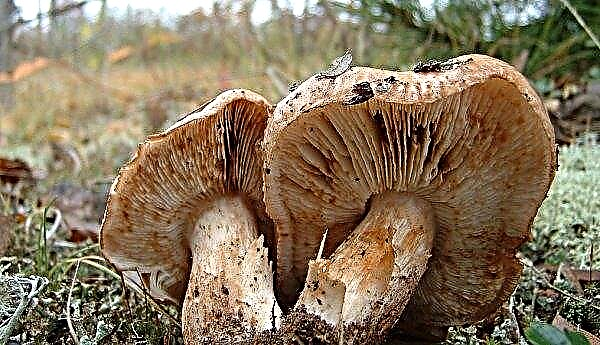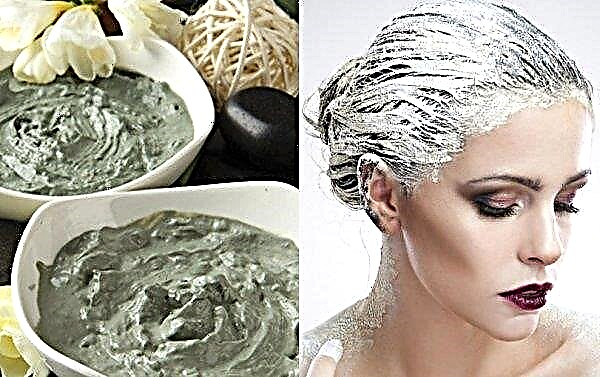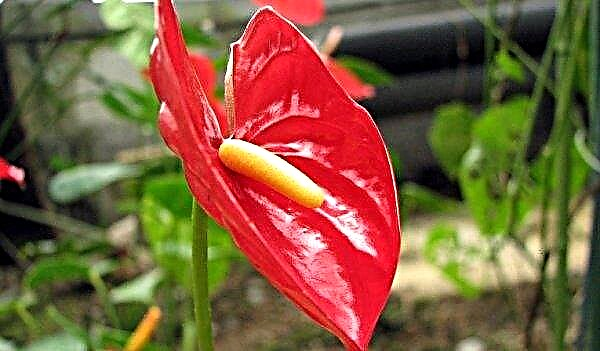Ficus Benjamin is the most popular type of ficus. Its unusually decorative appearance, combined with its unpretentiousness and the ability to form interesting shapes, attracted the attention of many gardeners. We will get acquainted with such an important stage in the life of this ficus as a transplant, that during it you should consider how to care for it after, and whether it is necessary to transplant after purchase.
How to transplant in a different pot
Before transplanting ficus, you should make sure that he needs it so that he doesn’t disturb the plant once again, and then stock up with everything necessary for this. Ficus Benjamin is unpretentious and hardy, but the transplant is very stressful for him and it is very important to do it right.

Season and frequency
Ficus Benjamin is transplanted in the spring or first half of June. In extreme cases, it can be transplanted in the summer, but not when there is intense heat. By October, when the plant begins a dormant period, the ficus manages to fully adapt to new conditions. The best time to transplant is the beginning of spring, when the period of active vegetation has just begun or is about to begin.
Planned transplants are not carried out in the autumn-winter period, but sometimes this houseplant urgently needs to be transplanted. Such a situation usually develops if the ficus grows in an unsuitable, quickly drying out or too dense substrate, an improperly sized pot, rotting of the roots during waterlogging, and nematodes. Usually, mass yellowing and falling of foliage are observed.
Ficus Benjamin can be transplanted in the fall or winter, when it is clear that he is unlikely to live up to the optimal time for transplantation, but only by transshipment, to least bother the plant.
However, in case of root decay or damage by nematodes, the plant will have to be freed from the soil, remove diseased roots and potassium permanganate. After such a transplant, he needs to create optimal conditions and be patient, as, most likely, he will discard foliage and slow down growth. Unfortunately, in some cases the plant cannot be saved, but you can try.
Important! Before transplanting ficus during rest, you need to make sure that this situation is not caused by a violation of the rules for its maintenance — dry air, draft and temperature difference, scorching light or a strong shadow, improper watering and lack of top dressing, violation of soil acidity. Pest attacks or illness can also cause a very similar picture, but it will not be necessary to transplant, but the use of special drugs.
Young Benjamin ficuses are transplanted annually by transshipment. For specimens older than 4 years, this procedure is performed once every 2-3 years, and for very old plants this can be done every 5-6 years. Large specimens in large capacities are not transplanted at all, but annual topsoil is replaced with a new substrate with the addition of organic matter.
Basically, the need for transplantation occurs in the following cases:
- The roots of the plant have mastered the whole earth and begin to bulge out of the pot. In an overgrown plant, the roots often hang from the drainage hole.
- It is necessary to renew the land.
- When breeding.

Pot
Most often, a transplant for ficus is performed due to the fact that the plant has mastered the entire space of the pot, and it needs a more spacious container with an updated substrate. A new pot is chosen 2-3 cm more in diameter and height. The material of manufacture for the pot does not play a special role. The main thing is that the pot could hold the plant, was slightly more than its roots and had a drainage hole. For young plants, it is recommended to use ceramics that contribute to their better development, and large old specimens often grow in wooden tubs.
The ficus fits the classic shape of the pots when their diameter is equal to the height. But fans of "bonsai" need more flat tanks. The height of their sides should be at least 10 cm.
Did you know? From several nearby planted shoots of ficus Benjamin you can get unusually decorative weaves. Therefore, even before planting, you should think about the volume and shape of the pot, as well as molding techniques.
Sometimes, in the process of forming a more compact tree, small volumes of containers are used to limit its growth. Then, during the transplantation, the roots are carefully trimmed, and formative pruning is done.
Ficuses cannot be transplanted into an oversized pot in any case. Excess soil will turn sour and cause root decay.
Video: Benjamin Ficus Transplant
Land
Younger specimens prefer lighter permeable substrates. The sheet earth or ready-made universal soil from the store is suitable for them. For older specimens, denser soils are preferred. It is imperative that the substrate is neutral in acidity (5.5–6.5 pH), has good permeability and can retain moisture. About 1/5 of the tank is covered with a drainage layer of gravel, expanded clay or broken brick.
You can prepare the following mixture for planting:
- turf - 4 parts;
- leaf land - 4 parts;
- sand - 2 parts.
The prepared soil is disinfected in a way convenient for you - it is poured with boiling water or potassium permanganate, calcined in the oven. Purchased soil is usually disinfected, but if it has a "mushroom" smell, then it also undergoes processing before planting.
Important!Sheet earth cannot be taken in willow trees, under chestnuts, oaks and poplars, as it contains a large amount of tannins. The foliage of a birch grove is perfect, from under maple, linden, and you can also take it under garden trees.
Step-by-step instruction
The technology for a planned transplant in the spring, when it became necessary to transplant Benjamin's ficus into a larger pot, is as follows:
- An hour before the procedure, abundant watering is carried out.. Excess water is drained from the pan.
- Carefully take out an earth ball with roots. For such a recess, one must tap on the container. Large specimens can be tried to loosen and it is best to transplant more than one.

- After removing the plant, pay attention to inspecting the roots.. If they are healthy, transplantation can be carried out further, only slightly free the roots from drainage and large lumps of the old substrate. And if there is rotten and dead, then they need to be removed, freed from the ground and cut off the problem areas with a sharp knife all the way to the living root.
- Pour drainage into a pot and try on a plant. Then add a little soil or tighten the drainage.
- Put the ficus in the center of the tank again, straighten the roots and fill the voids with the prepared soil mixture. The root neck is not buried.
- Damp the ground well.
Did you know?Thais revere Benjamin's ficus and consider it a symbol of their capital - Bangkok.
Further care
Care for Benjamin's ficus after transplantation is as follows:
- The transplanted ficus is returned to the previous place of residence if optimal conditions are met in it. There should not be direct rays of the sun, heating devices, draft, and the temperature should be in the range + 22 ... + 25 ° С.
- Spray the plant with boiled water at room temperature every day. One of them can be done with the Epin stimulator, which will help recover after transplantation.
- On small items on top, you can wear a transparent bag to preserve a wet microclimate.
- Watering is carried out when the topsoil dries well. They use well-defended or filtered soft water at room temperature. If the earth has sagged heavily after watering, then a little more should be added from above.
- The first top dressing is done only after a month. Further, in the spring-summer period it is fed with fertilizers with a high nitrogen content - twice a month. For this time, you can use both organic fertilizers (rotted manure) and mineral fertilizers (for example, urea, urea). Complex fertilizers “Palm”, “Giant”, “Kemira”, “Rainbow” are considered good top dressing.

Do I need a transplant after purchase
In any case, only the purchased plant will have to be given 3 weeks to adapt to new conditions and observe it. It is quarantined away from other plants. After 14 days, it should be carefully examined. If there are no signs of disease and pests, the plant can be planted in a new pot - it is completely healthy. Of course, if the pot, soil mixture and the plant itself are in satisfactory condition, then you can not rush to transplant.
However, usually Benjamin's ficus should be transplanted after purchase, since store soil is usually only suitable for transportation, and a plant for sale is often contained mainly due to fertilizing and stimulants. In addition, small pots are used for it, which also need to be changed to more spacious containers. During the transplant, the roots of the ficus must be carefully cleaned from the store substrate by washing in running warm water. If this is not done, the plant may begin to shed leaves, turn yellow and lose its aesthetic appearance. To make the acquired flower easier to survive the transplant and adapt faster, it is immediately covered with a polyethylene bag immediately after the transplant to create greenhouse conditions. For better adaptation, you can spray "Epin". Every day the package is removed for 10-15 minutes for ventilation, the soil is moistened as necessary. As soon as the plant begins to actively grow and develop, the package is removed.
During the transplant, the roots of the ficus must be carefully cleaned from the store substrate by washing in running warm water. If this is not done, the plant may begin to shed leaves, turn yellow and lose its aesthetic appearance. To make the acquired flower easier to survive the transplant and adapt faster, it is immediately covered with a polyethylene bag immediately after the transplant to create greenhouse conditions. For better adaptation, you can spray "Epin". Every day the package is removed for 10-15 minutes for ventilation, the soil is moistened as necessary. As soon as the plant begins to actively grow and develop, the package is removed.Correct transplantation of ficus Benjamin is the key to the fact that the plant will delight you with its healthy and aesthetic appearance for more than one year.Did you know?In natural conditions, Benjamin's ficus can grow up to 25 m, and in room conditions it does not grow more than 3 m. It can be shaped very well and can grow in office lighting conditions.














